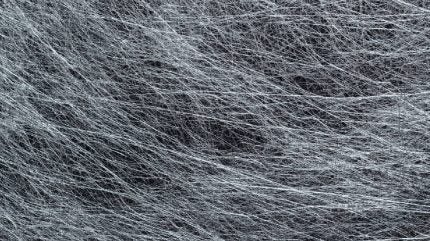
The report, unveiled in Lisbon, Portugal on 16 October 2025, underscores a shift from zero low-risk Green Shirt producers in 2016 to 21 in 2025.
It also reflects an increase from no commercial-scale Next Gen fibre lines to 16 available today, indicating that substantial change within the fashion sector can occur over a few years rather than decades.

Discover B2B Marketing That Performs
Combine business intelligence and editorial excellence to reach engaged professionals across 36 leading media platforms.
The 2025 Hot Button Report provides an extensive analysis of MMCF producers’ efforts to reduce sourcing from ancient and endangered forests while accelerating the transition to low-carbon, circular Next Gen alternatives.
This year’s edition assesses 98% of global MMCF production, employing Canopy’s established “shirt” rating system to evaluate progress.
The findings reveal that nearly 70% of producers have now achieved Green, Partial Dark Green, or Dark Green status, marking a stark contrast to the landscape nine years ago.
Lenzing and Tangshan Sanyou lead the rankings, tying for the top position, with Aditya Birla closely following in second place. Other noteworthy producers attaining Dark Green Shirt status include Jilin Chemical Fiber, Yibin Grace, and Xinxiang Chemical Fiber (Bailu).

US Tariffs are shifting - will you react or anticipate?
Don’t let policy changes catch you off guard. Stay proactive with real-time data and expert analysis.
By GlobalDataThe report features contributions from 30 MMCF producers globally and includes two new entrants, raising the proportion of Green Shirt-rated production to 54% by 2025.
Each leading company has demonstrated unique strengths and shared a collective focus on advancing Next Gen fibre alternatives, according to the report. This approach is essential for reducing forest reliance and enhancing supply chain resilience.
Canopy founder and executive director Nicole Rycroft said: “This 10th edition of the Hot Button Report shows that supply chain transformation is not only possible — it’s happening.
“Business-as-usual can no longer be the standard if we’re to keep vital forests standing and stabilise our climate. The leaders in the Hot Button are demonstrating that investing in Next Gen Solutions isn’t just good for the planet — it’s integral to building resilient, low-carbon supply chains to meet brand expectations, mitigate against increasingly volatile raw material supply, and deliver long-term business value.”
Other key developments in 2025 for Next Generation MMCF include:
- 16 Next Generation MMCF product lines are now available commercially, showing an increase compared to the previous year.
- Tangshan Sanyou has developed a new type of Next Generation lyocell.
- Xinxiang Chemical Fiber has opened a facility in China that uses juncao grass to produce MMCF.
- There is increased testing and use of Circulose, OnceMore by Södra, and Circ Next Generation fibres.
- Circ has announced plans for a commercial-scale facility in France to produce lyocell-quality recycled pulp.
- The industry has also seen the launch of Circulose Forward and Circ Fiber Club, which are initiatives aimed at encouraging cooperation throughout the supply chain.
“The Hot Button Report gives us valuable insight into forest impacts across our supply chain. Its clear scoring system and independent audits support our sourcing team in making well-informed decisions,” H&M Group’s global sustainability department, raw material sourcing, sustainability business expert Madelene Ericsson Ryman said.
Bestseller Selected sourcing manager Michael Jønsson added: “The Hot Button Report is a key tool in guiding our MMCF sourcing, helping us track progress and identify suppliers driving next-generation innovation. It connects our ambitions with concrete sourcing strategies.”





